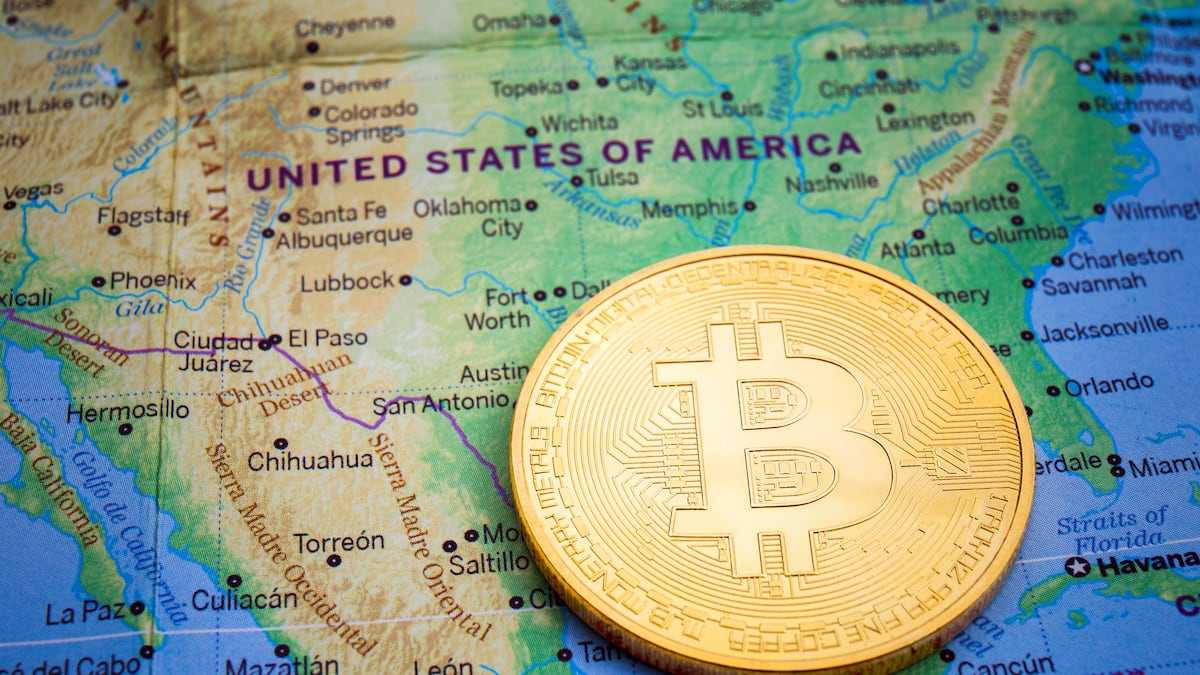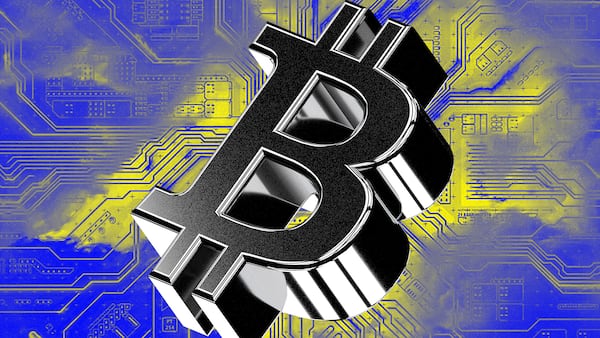- Large Bitcoin mining companies could gobble up smaller, less-efficient mining outfits in the wake of the halving.
- This could pose a danger to Bitcoin's network in the long run.
- Industry insiders, however, point to a number of factors that mitigate the risk.
Bitcoin mania is spreading.
The cryptocurrency’s price has been buoyed by optimism surrounding the launch of new exchange-traded funds that have lured a wide swath of fresh investors.
Also helping the price: Anticipation for the so-called halving — an April event designed to reduce the creation of new Bitcoin and keep the asset scarce, and thus, in theory at least, more valuable.
But behind the euphoria, worries are brewing.
The fourth halving, and the halvings after that, pose what Gryphon Digital Mining CEO Rob Chang describes as an existential threat. Bitcoin might lose, little by little, its decentralised make-up.
“The essence of Bitcoin lies in its decentralised nature, offering a bulwark against censorship and central control,” Chang told DL News.
Bitcoin, unlike, say, the US dollar, isn’t controlled by any single entity like a corporation, bank, or government, but rather by a vast network of computers.
The loss of that vital characteristic, a central tenet of pseudonymous creator Satoshi Nakamoto’s vision, “not only undermines this foundational principle,” Chang said, “but also exposes the network to heightened security risks… and erodes the trust and integrity that Bitcoin aims to establish.”
Weakened viability
It’s not just theoretical.
When the halving happens, possibly on April 20, Bitcoin miners — which maintain the blockchain — will feel the squeeze.
Their rewards will drop to 3.125 Bitcoin from 6.25 Bitcoin each time they create a new block. On average, about 144 blocks are “mined” each day, translating to about 900 Bitcoin produced per day before the halving, and 450 Bitcoin afterward.
“The next halving will weaken the viability of independent, non-institutional miners from retaining profitability, which could further contribute to consolidation” of the industry, Coinbase analyst David Han argued in a late January report.
Miners are already talking about consolidating.
Marathon Digital Holdings, the largest publicly traded Bitcoin miner in the US, has told DL News that it’s shopping for new sites.
The worry is this consolidation will kick off a Domino effect, potentially ending up in a scenario where Bitcoin is under full control of a few, or perhaps even one, mining outfit.
“In the long run, decreased mining revenue margins is a potential threat to decentralisation in Bitcoin mining operations,” Han wrote.
Then what?
Repercussions could be catastrophic for the world’s largest cryptocurrency.
Chang noted that should the network fall under the control of a particular entity, Bitcoin would be exposed to “51% attacks” — an industry term to describe a majority takeover of the blockchain.
“The essence of Bitcoin lies in its decentralised nature, offering a bulwark against censorship and central control.”
— Rob Chang, CEO of Gryphon Digital Mining
Among worst-case scenarios: The controlling firm could arbitrarily decide, for example, to spend more Bitcoin than it actually owns; it could also reverse Bitcoin transactions that it doesn’t approve of.
Or spooked investors could dump their Bitcoin holdings en masse, put off by the unreliability of the technology.
Long-term threat
To be sure, it would take a while for a monopoly to establish itself over Bitcoin’s network, industry insiders told DL News.
That’s because no one company’s computers have that much firepower. Even the 80,000 machines in Marathon’s facility in a small town in Texas barely make a dent.
“Marathon is by far the biggest public miner today, and even so, is only 5% of global hashrate,” Marathon’s chief growth officer, Adam Swick, told DL News, using the term for the measurement of computer power backing Bitcoin.
“The amount of capital and real-world assets — miners, transformers, sites — it would take to centralise Bitcoin’s hashrate today feels fairly unreachable by any single entity,” Swick added.
Chang echoed the sentiment. All the major public Bitcoin miners combined would own only about 20% of the network, he said.
Even so, it’s a long-term worry, Mike Cohen, CEO of Pow.re, a private mining firm, told DL News.
“Whether it’s Bitcoin mining or you name it — pharmaceuticals, energy, food, and beverage — everything tends to conglomerate.”
It would be a paradoxical result of the industry becoming more efficient, Cohen said.
“What began as a perfectly competitive system may tend towards an oligopolistic one as a result of its own success.”
The antidote
But there are signs of counter-balance to the looming threat of consolidation.
“You have micro-miners that are running like one to maybe 100 machines and often they don’t even care about profit,” Zack Voell, a Bitcoin researcher, told DL News. “They’re okay eating an electricity bill every month for a year because they want the Bitcoin.
“There are always these massive farms… that will never be known,” Voell said, noting that mining operations in the remote country of Bhutan went unnoticed for a long time.
Mining operations are spinning up in Africa, too. Taras Kulyk, CEO of mining hardware provider SunnySide Digital, said his firm has shipped mining rigs to African countries with large hydro facilities.
“An African village doesn’t need 10 megawatts of power,” he told DL News. “So what does it do? Maybe the entire village puts in a little cash to buy a few Bitcoin miners, and instead of seeing their savings in their local currency depreciate, they earn Bitcoin.”
Higher bar of entry
Nevertheless, Cohen of Pow.re expressed doubts about micro-miners contributing all that much to the network.
“Even if a million individuals buy millions of machines, would they compare to one large mining operation?” he said.
It’s also getting harder to grow a small operation into a large one from scratch. “The ‘new entrant’ period is over,” Chang, the CEO of Gryphon Digital Mining, said. “We were one of the last ones that could do it.”
Founded in 2020, Gryphon became a public company on February 9. Chang estimated that a miner would now need to raise as much as $100 million to do the same — a tough prospect.
“Investors are going to ask: ‘Why should I give you money when there are incumbents in the space that are already doing it?’” he said.
Tom Carreras is a markets correspondent for DL News. Got a tip about Bitcoin mining? Reach out at tcarreras@dlnews.com.









